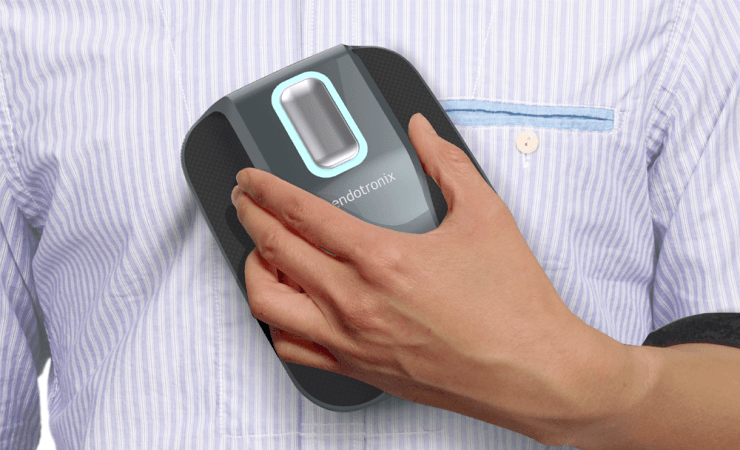Eliminate Stigma
We want to eliminate fear and embarrassment from the products we create. When we were asked to re-think hearing aid design, we went out and listened to people who use hearing aids. One person told us about the emotional toll a hearing aid took on him: fiddling with controls that were simply too small for his aging fingers to detect drew attention to something that made him feel old. Many hearing aid users shared this embarrassment. This led us to create features like gesture control technology, which makes it easier for users to adjust settings while wearing their hearing aid with a subtle sweep of the finger. The features empowered the user, and the cool factor combated the stigma of age and sickness.
Create Connection

As people age in their homes, medical products must intelligently help them stay connected, to create an emotional lifeline. Forward-looking companies are realizing the power of connected care teams. We recently worked with a company called Endotronix, making an implantable sensor that detects pulmonary artery pressure. They wanted to create a patient monitoring solution that provides proactive home-based care and continuous monitoring for heart failure patients and their caregivers. When we did our research, we found that the status quo was not creating a positive experience around this new care paradigm. Heart failure patients had to take a daily reading via a machine that looks looks like an old fashion copier. We designed a portable reader that encourages patients and caregivers to habitually collect and interact with information from the pulmonary artery sensor. The system now provides the patient portability, accessibility, and convenience.
Related: 11 Startups Building the Next Generation of Medical Sensors
Make it Sticky

We want people to engage with their medical products because they want to, not because they have to. Sticky products and experiences help make this happen. When we set out to create sticky products, we employ strategies like progressive disclosure and coaching. For example, when we designed an app to empower positive behavior change for people with implantable cardiac defibrillators (ICDs), we started simply, asking patients to build a single new habit—interact with this “Heart Coach” app every day. We drew users in by offering something they were all eager to receive—data about their ICDs. As users buy in and build the habit of checking in, Heart Coach builds on the engagement by slowly revealing new information. The app offers personal coaching to help users achieve their goals, and brings in support from a community of caregivers.
Focus on Experience
When we’re designing an experience for a patient who is afraid or frustrated, we find that they don’t care about a product’s feature set as much as how it can help them navigate the new health challenges they are experiencing, physically and emotionally. They want products that help them live their lives without the friction of their disease. They want to know that they are still the same character, despite their plot twist. A loved medical product will help them perpetuate their desired self-image, and keep doing the things that matter most to them in life.
Emotion represents a huge untapped opportunity for medical product developers. As patients gain more choice and control in their health experiences, medical brands will need to use engagement to differentiate their offerings. Those that aspire to create love will ladder up the patient experience from simple function to meaning and pleasure.
As people begin to fall in love with their health experiences, there will be more compliance and more products will be sold. More importantly, products that invoke positive emotion will empower people to feel more connected, stronger, and healthier.
What’s love got to do with medical design? Everything.
Opinions expressed by HIT Consultant Contributors are their own.


